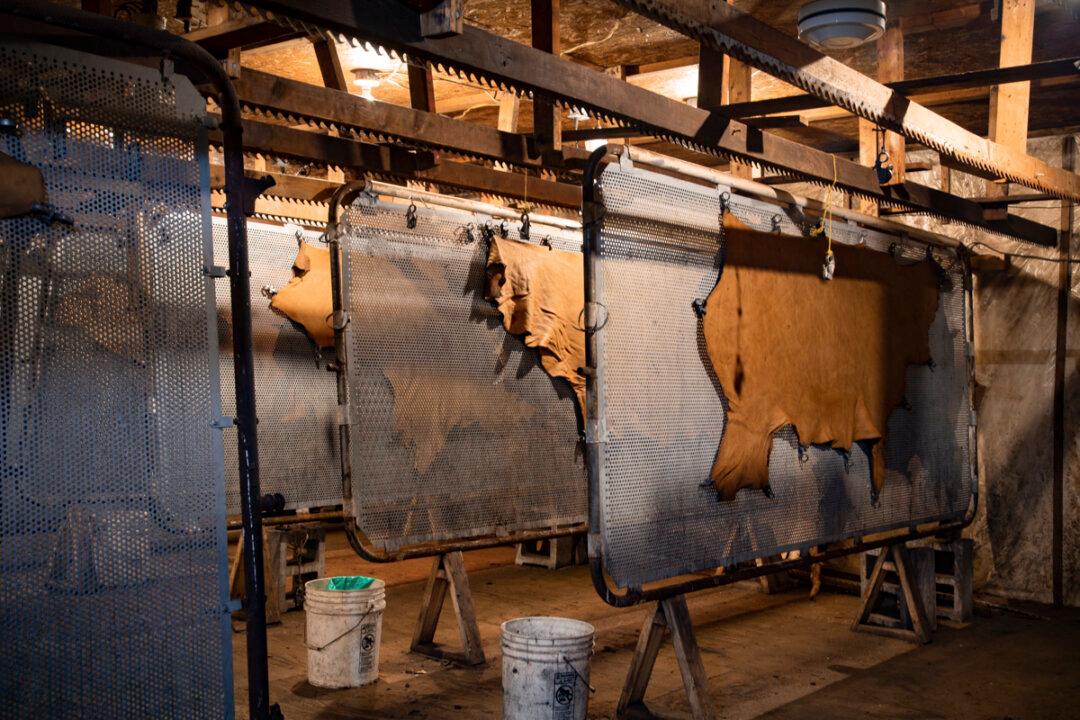On an August midmorning, it’s already 100 degrees inside the parchment and leather workshop. But Pergamena owner Jesse Meyer is happy and smiling. We’re sitting down for a bit to talk about his business and how it happens to be one of the few remaining in the United States now making parchment from animal skin. Parchment is a millennia-old product generally used for scribal purposes—the Declaration of Independence, the Bill of Rights, and most of the Dead Sea Scrolls were written on parchment, likely made from sheepskin in the former cases.
Vellum and parchment were invented under the patronage of Eumenes of Pergamum, as a substitute for papyrus, which was temporarily not being exported from Alexandria, its only source.
Herodotus mentioned writing on skins as common in his time, the 5th century B.C. [...] Parchment (“pergamenum” in Latin), however, derives its name from Pergamon, the city where it was perfected (via the French “parchemin”). In the 2nd century B.C., a great library was set up in Pergamon that rivaled the famous Library of Alexandria. As prices rose for papyrus and the reed used for making it was over-harvested toward local extinction [...] Pergamon adapted by increasing use of vellum and parchment.
—Richard Norman, specialist liturgical bookbinder, EdenWorkshops.com





